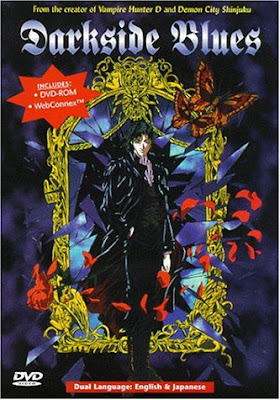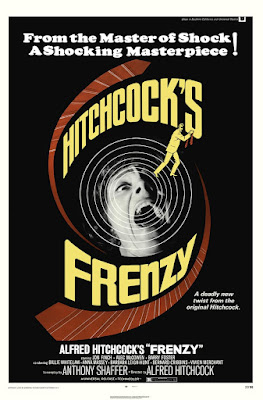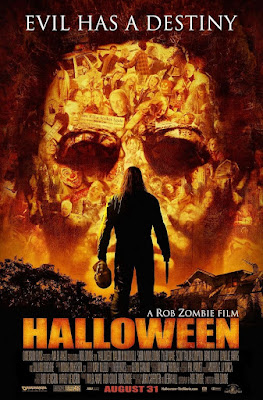Director: Park
Chan-Wook
Screenplay: Park
Chan-wook and Jeong Seo-kyeong
Inspired by Thérèse Raquin by Émile Zola
Cast: Song
Kang-ho as Fr. Sang-hyun, Kim Ok-bin as Tae-ju, Kim Hae-sook as Mrs. Ra, Shin
Ha-kyun as Kang-woo, Park In-hwan as Fr. Roh, Song Young-chang as Seung-dae, Oh
Dal-su as Young-du
A Night of a Thousand Horror (Movies)
When I think about what helped me become a huge cineaste, the 2009 Cannes Film Festival was a huge turning point for this among other factors, a strong line up in terms of just the competition when I took interest in reading the coverage. That festival had the infamous Lars von Trier film Antichrist, and Gaspar Noe's Enter the Void, had acclaimed films likes Quentin Tarantino's Inglourious Basterds, Jacques Audiard's A Prophet and the eventual Palme D'or winner for that year, Michael Haneke's The White Ribbon. There are also the other fascinating films in the official selection, not even factoring in the other screening categories for awards or not, such as Hong Kong film maker Johnnie To collaborating with French actor/singer Johnny Hallyday on Vengeance, or Thirst, Park Chan-Wook making his way from the acclaimed Oldboy (2004), part of a trilogy on vengeance which premiered at Cannes, into a vampire film.
Chan-Wook, a decade later, has had a strong career, The Handmaiden (2016) another huge film alongside a career with a divisive American production (Stoker (2013)) that are mandatory, but also something I would have never had predicted on the bingo card when I first saw films like Thirst, a BBC mini-series called The Little Drummer Girl (2018) based on a John le Carré novel. Thirst comes from a time before this where I vividly remember Western audiences asking themselves what he would do next now the then-completed Vengeance trilogy had ended. Chan-Wook was helped considerably by the wave of interest in Asian cinema, including South Korean, that came in the early 2000s, and whilst the middle film of this eventual trilogy, Oldboy was the film which caught attention and could have won the Palme D'Or in 2004, the unofficial Vengeance trilogy as a whole was what was on peoples' minds especially when he finished it, starting with Sympathy for Mr. Vengeance (2002) and ending with Lady Vengeance (2005). Before Thirst was I'm a Cyborg, But That's OK (2006), a divisive but necessary move into a comedy with melancholic edges about a young woman in a mental hospital because she thinks she is a cyborg. Thirst took a further direction in being a horror film whose erotic and violent love plot centers on a Catholic priest Fr. Sang-hyun (Song Kang-ho) being turned into a vampire. It was a step confidently forwards, whilst absolutely staying as idiosyncratic as I remembered it even in terms of its sudden switches to comedy.
Kang-ho's priest Sang-hyun goes to a research lab tackling a near-if-not-fully fatal disease, and is the one man who survives as a willing test subject. He finds himself meeting a childhood friend as a result of his miraculous recovery, one whose adopted member and wife of this male friend, Tae-ju (Kim Ok-bin), is treated like trash by the mother. This is all in mind his survival comes due to a blood transfer of his involving vampiric blood and that he has fallen in love with Tae-ju; when he changes fully into his new form, alongside the taste for blood, so does the subtext of a man who lived his faith only to be drawn to earthly pleasures. It feels less like an anti-religious film, before one asks, but explicitly riffing on the French novel Thérèse Raquin by Émile Zola, his fight against his own Catholicism part of the psychodrama that this film has, one which just happens to involve vampirism, where it becomes the catalyst for both power but an unquenchable thirst.
The title is perfect for its themes where we sympathetic with our two leads who fall in love but see them slip into a downward spiral confusing between sensual pleasure and needing to murder the son, all amongst the reasons for a growing body count. It is a tangled web where Tae-ju was treated terribly by the mother, overprotective of her hypochondriac adult son, tormented to the point that, when power comes to her in her romance with Sang-hyun, simply running at night to avoid contemplating the son's murder is not enough. Even if she does love Sang-hyun, the tragedy is still there are the film escalates, and here I also have to credit co-writer Jeong Seo-kyeong who became a frequent collaborator from his final Vengeance film onwards, Lady Vengeance (2005). She is arguably a huge factor for the turn of his films from then on, as she worked with him on films like The Handmaiden to Decision To Leave (2022),. She could been seen as a huge catalyst for where his career would go in-between projects with other writers, alongside how she became acclaimed in South Korea for her work as a screenwriter not only his films.
The complexity has grown in this film when having returned to it. Faith exists but if you struggle with your emotions, you will suffer the infernal war, and that is not helped when you've been turned into a vampire that ramps up this war. Song Kang-ho plays his character as a priest that even to the end, when he has killed in horrible ways, is struggling with his real morals as a good person, neither helped that people close to him turn around him at his lowest. Even the priest who raised him spiritually, who willingly slices a wrist to feed him and listens with concern for his vampiric issues, just wants to be turned into one due to a life blinded in the eyes. Tae-ju too, whilst loving him dearly, has been twisted by her situation to effectively use him to get power in her household. It is a great performance from Kang-ho, but that it isn't a surprise, whilst Kim Ok-bin goes between sympathetic, disturbing and, when she becomes a vampire with the makeup and costume upgrade to match, devilish in a compelling way.
Reading the synopsis to Zola's Thérèse Raquin, a surprising amount of the narrative was transferred, a film like Zola's story about studying temperaments of its cast, even when it is reinterpreted in humorous ways here like the dead refusing to leave their murderers' lives even when it comes to the coital bed. Sensuality here is a vibrant, explosive act even in the joys of kissing bruises from self flagellation for sinful thoughts to toe and armpit sucking, the eroticism on display here something that would return significantly with The Handmaiden. The tonal flip-flops make sense in mind to this presentation of these complicated characters in terms of morals and their emotions, a melodrama between comedy and extreme violence for a film that was a huge hit back in its native South Korea. The emotional mind field here is what is central to the story, whilst the horror premise becomes itself the stylization, yet to the production's credit, how this is depicted still stands out. The plasticity of the special effects, in terms of depicting Sang-hyun being able to leap tall buildings and even crawl on walls, is great because it doesn't try to ground the unnatural power he now has. It has a major part to the emotions, like punching a lamppost in half in anger, or the least expected and abrupt neck break in the final act, and the tone of scenes alongside the bloodshed itself befits this hyper-stylized tone to the drama.
Winning the Jury Prize at that Cannes Film Festival where the film premiered, Park Chan-Wook didn't really have to worry in regards to his career after this, and from the strong acclaim he got from his earlier films in 2000s, he has continued on with a healthy career. Thirst itself would have stood out of interest for me just for the fact it was a director not known for horror tackling the subject, catnip for me for what he would bring differently to this area of cinema. Revisiting it this year again, a lot of that different and the surprise in the best of ways is what makes Thrist still a strong film, of tawdry, explosive passion and violence by way of its horror theming.






















